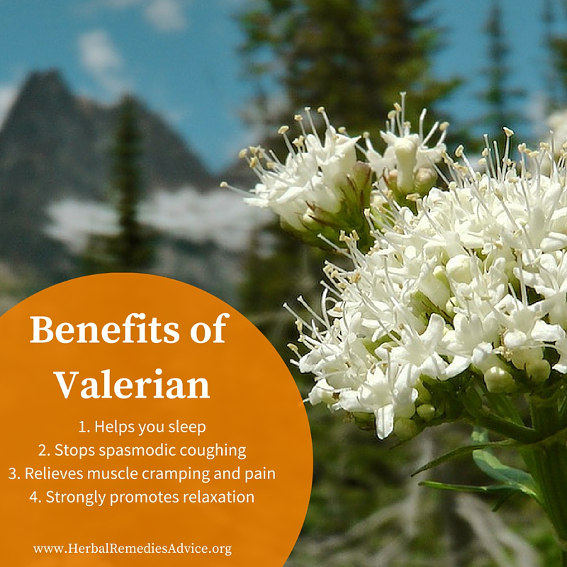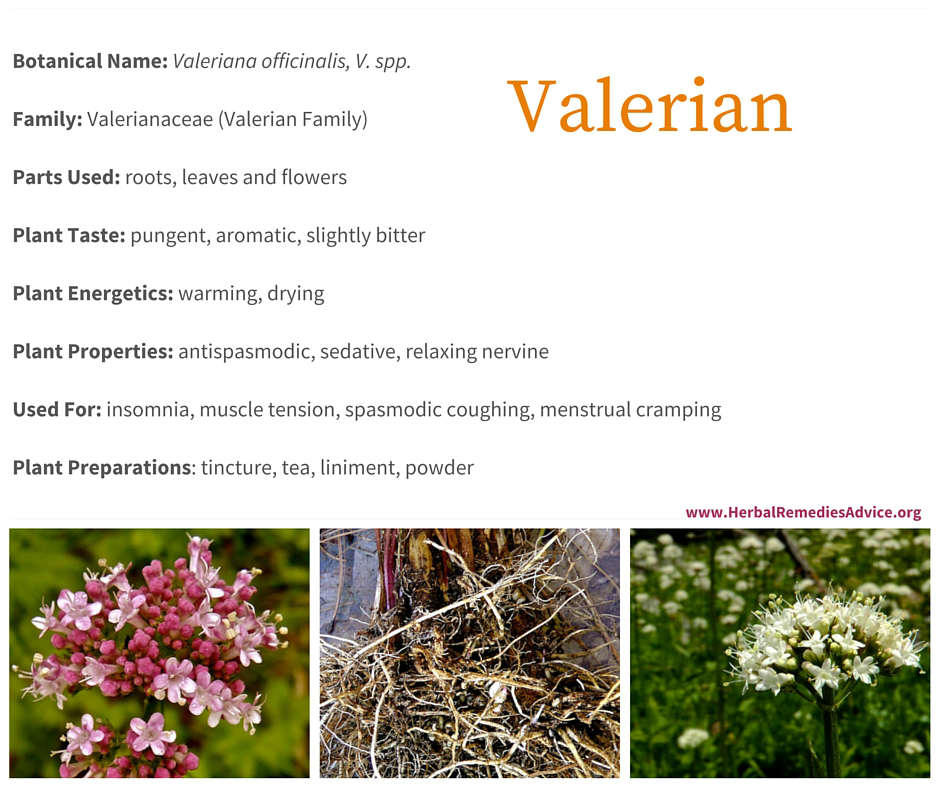Get weekly tips, recipes, and my Herbal Jumpstart e-course! Sign up for free today.

Valerian Benefits
Share this! |
|
Where I live in the North Eastern Cascades of Washington state, hiking through sunny alpine meadows with rich, damp soil rewards you with drifts of wild valerian. On a hot day, the flower’s musky scent fills the air (often along with mosquitoes). I clearly remember the first time I came upon one of these valerian meadows – as an herbalist and ardent lover of valerian, I was overjoyed at the beautiful sight.
Despite its unusual and often-disliked taste and smell, valerian is one of the most popular herbs of our time. According to a report by the US Natural Channel, valerian had the 11th highest sales in the natural products industry, grossing over $6 million in 2015.1
Valerian is an herb that has a long history of use around the world. Although V. officinalis was the official herb in the United States Pharmacopeia from 1820-1942, many other native Valeriana grow around the world and are also used medicinally.
Some of these different Valeriana species include:
- V. sitchensis in the western mid elevations of North America
- V. sylvatica in Canada
- V. mexicana in Mexico
- V. jatamansi in India
- V. capensis in South Africa
- V. phu in western Asia and southern Europe
Recorded historical use of valerian goes back centuries and it has been used for a variety of ailments. More recently it was used in both World War I and WWII for soldiers experiencing nervous disorders.
During the more recent War, when air-raids were a serious strain on the overwrought nerves of civilian men and women, Valerian, prescribed with other simple ingredients and taken in a single dose or repeated according to the need, proved wonderfully efficacious, preventing or minimizing serious results. - Maude Grieve, The Modern Herbal, 1931
If you’ve ever taken valerian extract or made it into various herbal brews you are familiar with its unique scent. Some people liken the smell to ripe gym socks or animal urine. I think of it as a pleasant earthy and musky aroma and it was in fact used in perfumes in the 16th century. Cats and rats alike are stimulated by the smell, with a reaction reminiscent of catnip-induced flurries. Some versions of the Pied Piper story say that it was valerian in his pockets, as well as his trusty pipes, that enabled him to lead the rats out of Hamelin, Germany.
Valerian Benefits for Anxiety and Insomnia
Valerian is most well-known for its sedating and relaxing properties. It has long been used for people with anxiety, nervousness, restlessness, and insomnia.
Researchers have studied valerian’s sedative qualities extensively. It has repeatedly shown to be effective, even when compared to pharmaceutical drugs.
In one study, researchers concluded that valerian was just as effective as oxazepam (a benzodiazepine) when taken over a 6-week period.2
One study compared the use of a three-herb formula containing valerian, passionflower and hops, to the sedative zolpidem. The researchers concluded that the herbal formula “is a safe and effective short-term alternative to zolpidem for primary insomnia.”3
Another interesting study reported that people taking valerian “reported significantly better subjective sleep quality than [those taking a placebo], after benzodiazepine withdrawal.”4
Several studies have shown valerian’s ability to promote sleep in menopausal women.5,6 It has also been shown to be effective for helping nervous and agitated children, as well as children who have difficulty with sleep.7,8
Three studies have been done to evaluate how valerian might influence reaction time, alertness, concentration, psychomotor effects, and next-day sedation. All studies showed that there was no negative impact.9,10,11
Valerian Benefits for Muscle Tension and Pain
Valerian’s relaxing effects result in decreased muscle tension and diminished pain relating to that tension. Consider using valerian for muscle cramps, menstrual cramps, restless legs, and neck and shoulder tension. (Tangential aside: Also consider magnesium deficiency as a root cause of these issues.)
One study set out to evaluate valerian’s effectiveness for people diagnosed with restless leg syndrome (RLS). The study concluded that “the use of 800 mg of valerian for 8 weeks improves symptoms of RLS and decreases daytime sleepiness.”12
Valerian has clinically been shown to decrease pain associated with menstrual cramps. In a double-blind, randomized, placebo-controlled trial, 100 female students were randomly assigned to receive either valerian or a placebo. Those taking the valerian reported that their pain was significantly reduced in comparison to those taking the placebo. The researchers concluded, “Valerian seems to be an effective treatment for dysmenorrhea, probably because of its antispasmodic effects.”13
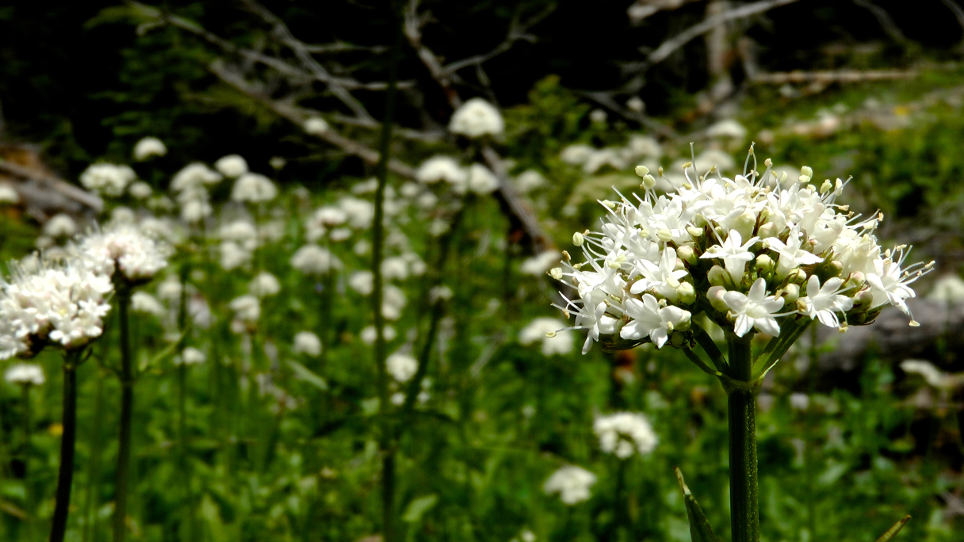
Valerian Benefits for Spasmodic Coughing
Valerian powerfully calms repetitive spasmodic coughing. I use it frequently for those end-of-illness dry coughs that tickle the throat as soon as you lay down, and then result in lung-wrenching spasmodic coughs. It not only calms that coughing reflex, it can also promote sleep.
Valerian Benefits for Supporting Cognitive Function
Eclectic herbalists in the early 1900s wrote that valerian was ideal when circulation to the nervous centers and brain were feeble. Researchers recently did a clinical trial that supports those observations. They “hypothesized that valerian root might prevent cognitive dysfunction in coronary artery bypass graft surgery patients through stimulating serotonin receptors and anti-inflammatory activity.”
To evaluate its effectiveness, researchers recruited 61 patients who would be undergoing coronary artery bypass graft (CABG) surgery. These patients were randomly divided into two groups who received either one 530mg valerian capsule or one placebo capsule every 12 hours for 8 weeks. Both groups of patients were evaluated for their cognitive function before the surgery and at 10-day and 2-month follow-ups. The researchers concluded that “the cognitive state of patients in the valerian group was better than that in the placebo group after CABG; therefore, it seems that the use of V. officinalis root extract may prevent early postoperative cognitive dysfunction after on-pump CABG surgery.”14
Valerian Benefits for Digestion
While most famously used for anxiety, restlessness, muscle pain, and insomnia, valerian can also correct stagnant digestion. Herbalist Michael Moore says that “Valerian stimulates digestive functions.”15
Dr. Harvey Wickes, an Eclectic herbalist from the early 20th century says, “Owing to its volatile oil it is a good carminative in flatulence, with nervous unrest, and relieves the disagreeable sense of fullness felt after a meal by causing a rifting of gas.”16
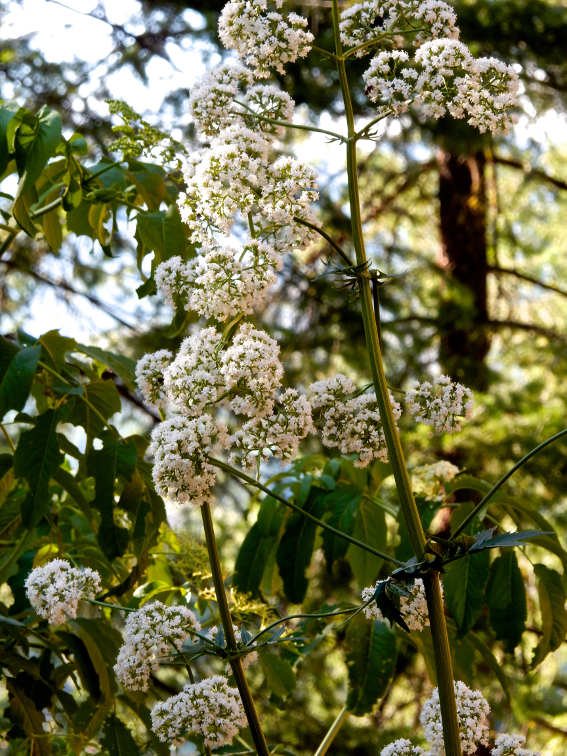
Using Valerian
Despite its popularity and long history of use, valerian is a very particular herb. While most people experience the expected relaxing effects of valerian, a small but significant segment of the population has an entirely opposite reaction; instead of relaxation or sleep, they find themselves wired with anxious energy or mental agitation.
These seemingly idiosyncratic reactions have been observed by herbalists for a long time. As a result, many herbalists have attempted to describe the typical “valerian person” in order to avoid giving it to those who have opposite reactions. Here are some of those descriptions:
In 1919, Eclectic Herbalist Finley Ellingwood writes, “Its influence upon the nervous system is best obtained when the circulation of those centers is inactive and feeble, especially when there is a paleness of the face and the skin is cool.”17
In his 1922 book, The Eclectic Materia Medica, Pharmacology and Therapeutics, Dr. Harvey Wickes Felter writes, “It is one of the best of calmatives for that collective condition termed ‘nervousness.’ To act well it should be given when the brain circulation is feeble and there is mental depression and despondency.”18
More recently, herbalist Michael Moore says that valerian increases digestive circulation, cardiac circulation, and lung circulation. Therefore, “If you are an adrenocortical-stress person, with a strong and demanding intestinal tract, good moist lungs, and the cardiovascular excess…then Valerian will stimulate the functions that are already excessive, and leave you with both sedation and physical stimulations – not your herb.”19
David Winston gives his specific indications for valerian as someone who is restless, nervous, and agitated with a pale face and cool skin.20
More simply put, many Western herbalists don’t recommend valerian for people with warm or excess constitutions and instead use it for those with cold or deficient constitutions. While this seems like a good general rule, I haven’t seen it be so clear cut in practice. Herbalist Jeremy Ross, who practices in England, lists valerian as cooling and bitter and best used for those with heat tendencies. He hypothesizes that valerian in Britain may be different than what is found in North America.21
I tend to avoid using valerian with those who have warm constitutions. When recommending valerian to someone, I first ask if they’ve ever taken it and what their experience was. If they have never taken it, I recommend they start with small doses and wait to hear their experience.
Valerian Dosage
Many herbalists prefer the fresh root tincture. Michael Moore reports that the continued use of dried root preparations may cause emotional agitation in some individuals.22
Preferred dosages vary widely. Start with smaller amounts and increase as needed.
Dried: 3-9 grams per day23
Fresh Tincture: 1:2, 70% alcohol, 2-5 mL24
Valerian Side Effects
As noted above, some people have a negative or opposite (stimulating) reaction to valerian. These effects are time-limited, but those experiencing them should avoid valerian in the future.
Reported adverse effects are rare, but can include diarrhea, headache, and gastrointestinal disturbance.25
The Botanical Safety Handbook writes, “Animal studies and human case reports have indicated no adverse effects of relatively high dosages of valerian in pregnancy.” The safety of valerian during lactation has not been conclusively established.26
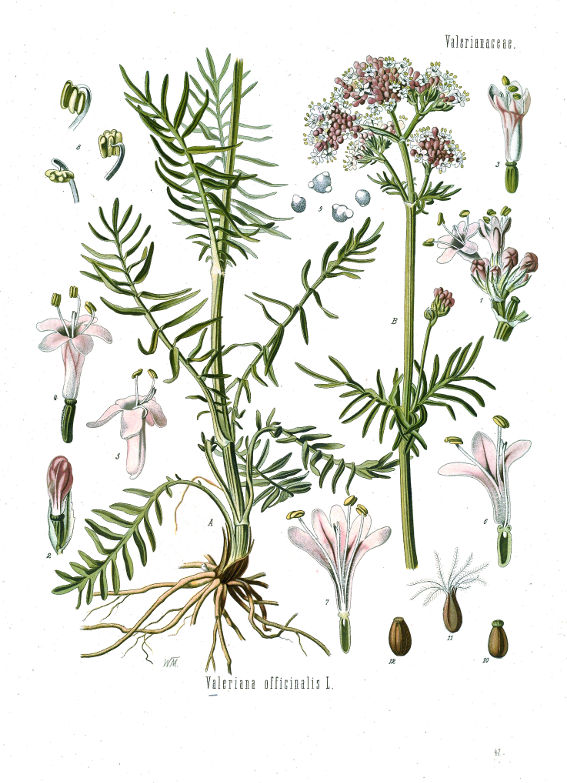
The Valerian Plant
There are many different species of valerian. This botanical section will focus on Valeriana officinalis. For more nuanced botanical descriptions, as well as botanical descriptions for other species, I recommend the book Medicinal Plants of the Pacific West by Michael Moore.
Valerian is an herbaceous perennial that grows 1 to 8 feet tall.
It prefers lots of sunlight and damp soils, and will readily re-seed in garden conditions or in wild meadows.
The leaves grow opposite along the stem. There are also basal leaves at the foot of the plant.
The flowers are most often white and some species have a pink hue. They grow as umbels on long hollow stalks. Each flower has five petals.
The spindly roots are a creamy white to yellow. They are ideally harvested for medicinal use in their third year, when the essentials oils are at their peak.
Citations for Valerian Benefits
Click to show/hide.
Rosalee is an herbalist and author of the bestselling book Alchemy of Herbs: Transform Everyday Ingredients Into Foods & Remedies That Healand co-author of the bestselling book Wild Remedies: How to Forage Healing Foods and Craft Your Own Herbal Medicine. She's a registered herbalist with the American Herbalist Guild and has taught thousands of students through her online courses. Read about how Rosalee went from having a terminal illness to being a bestselling author in her full story here.
